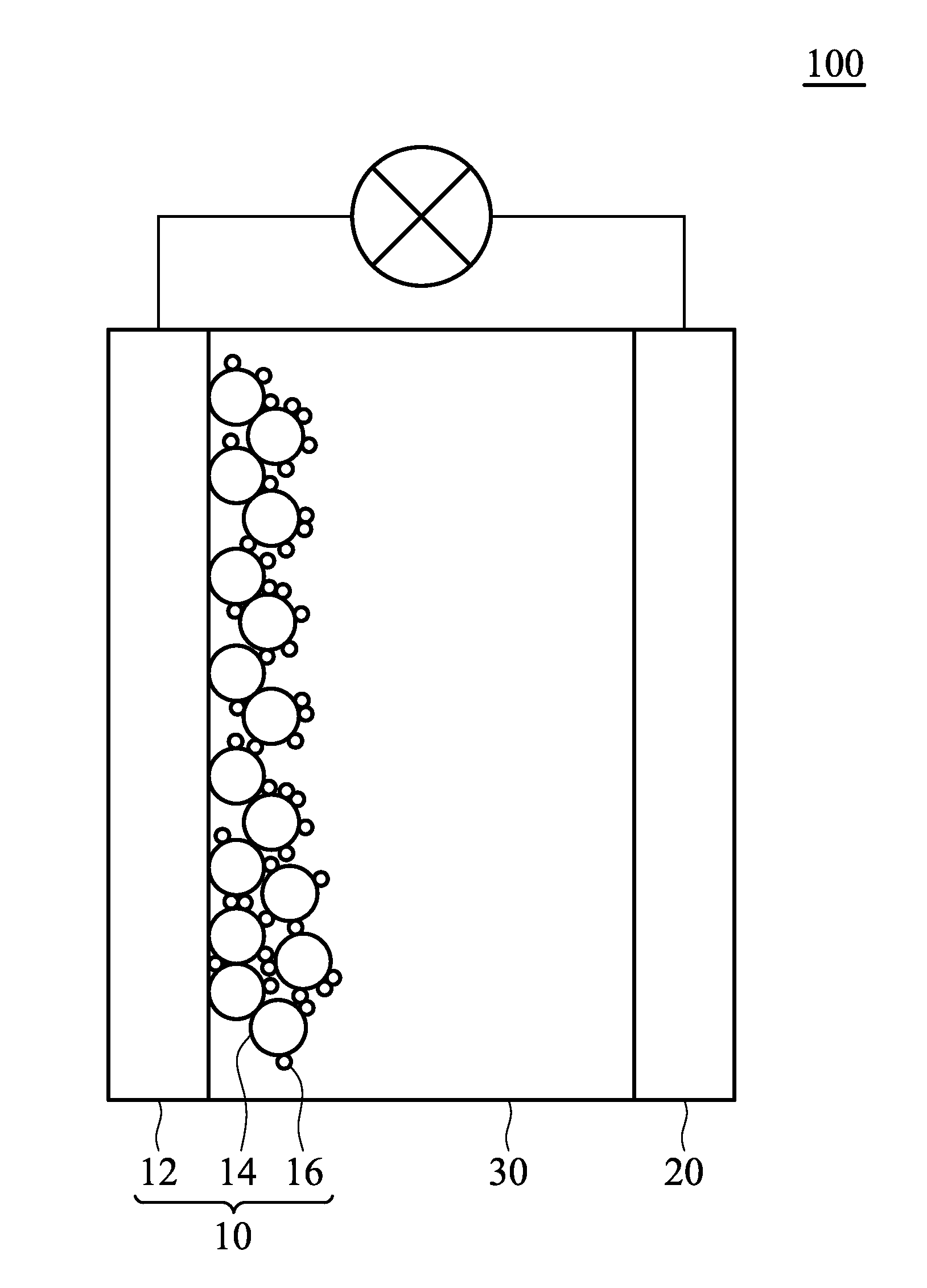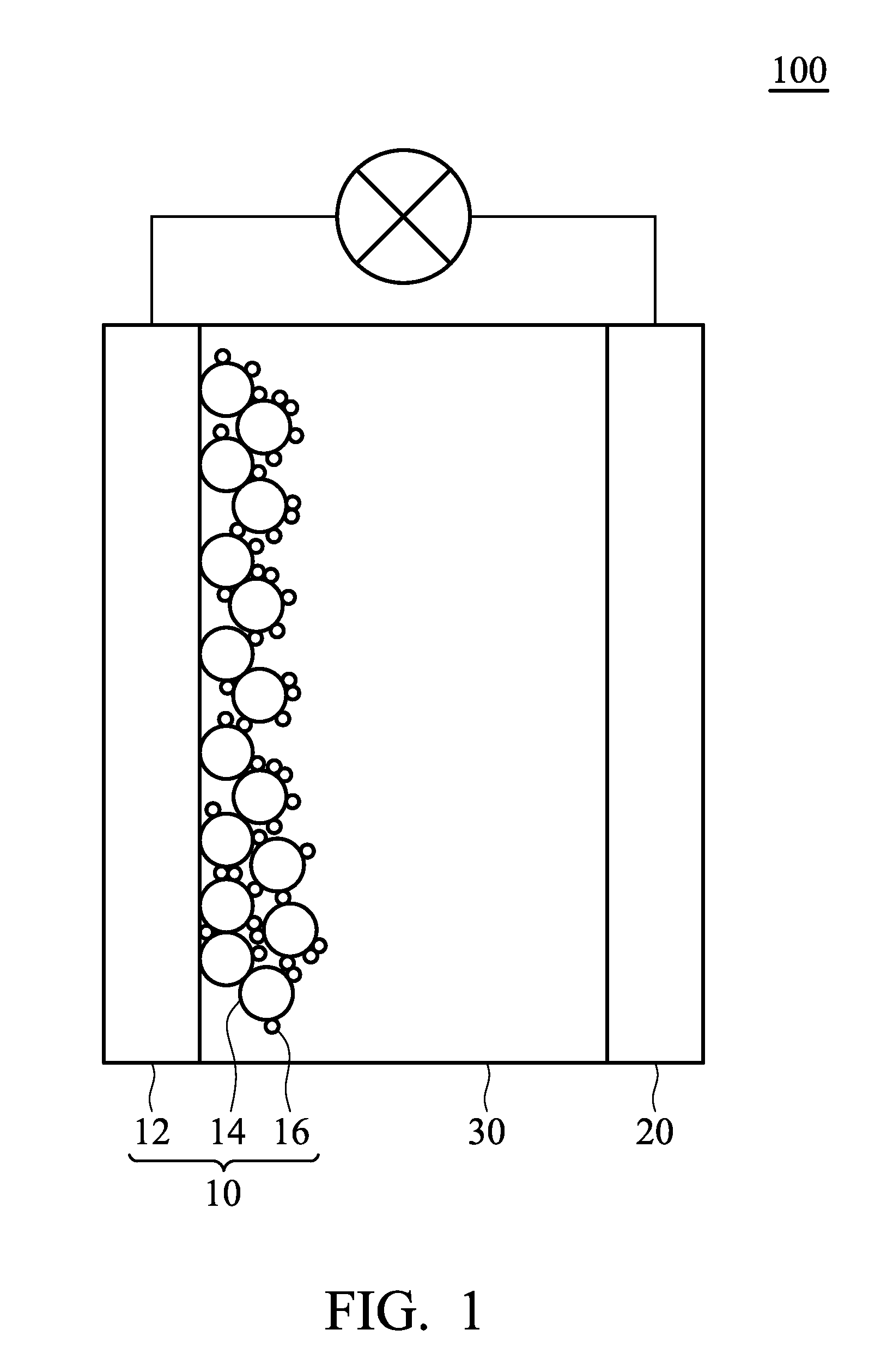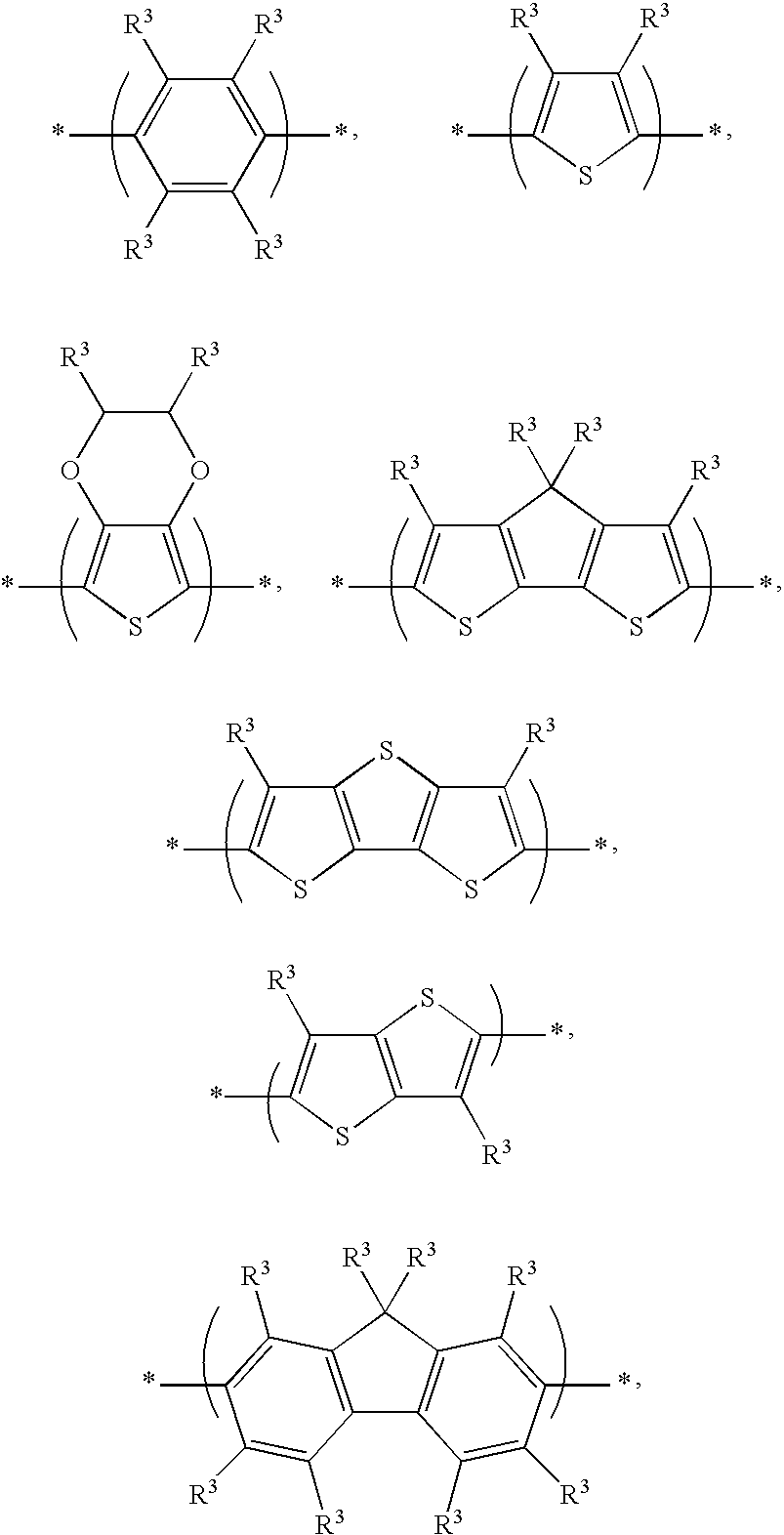Organic dyes and photoelectric conversion devices
a technology of photoelectric conversion device and organic dye, which is applied in the field of organic dye, can solve the problems of no substitute organic dye, high cost of dye itself, and insufficient supply,
- Summary
- Abstract
- Description
- Claims
- Application Information
AI Technical Summary
Benefits of technology
Problems solved by technology
Method used
Image
Examples
example 1
Preparation of compound W-01
[0030]First, 8g of DOCPDT (4,4-Dioctyl-4H-cyclopenta[2,1-b;3,4-b′]-dithiophene) was added into a 100 ml reaction bottle and dissolved using 50 ml of THF (tetrahydrofuran). Next, 7.95 ml of n-BuLi (n-butyl lithium) was added into the bottle at −78° C. After stirring for 2 hr, 4.36 g of Me3SnCl (dissolved in 10 ml of THF) was added into the bottle. After reacting at −78° C. for 2 hr and at room temperature for 10 hr, water was added into the bottle to quench the reaction, and the mixture was extracted using CH2Cl2. An organic phase was separated and dried by MgSO4. After filtrating, the filtrate was concentrated to remove the organic solvent, obtaining TMSn-CPDT(4,4-Dioctyl-2-trimethylstannanyl-4H-cyclo-penta[2,1-b;3,4-b′]-dithiophene).
[0031]Next, 9.5 g of TMSn-CPDT(4,4-Dioctyl-2-trimethylstannanyl-4H-cyclo-penta[2,1-b;3,4-b′]-dithiophene) and 5.43 g of (4-bromophenyl)-diphenyl-amine were added into a reaction bottle and dissolved with 100 ml of DMF (dimeth...
example 5
Preparation of Compound W-05
[0036]First, 8 g of DOCPDT (4,4-Dioctyl-4H-cyclopenta[2,1-b;3,4-b′]-dithiophene) was added into a reaction bottle and dissolved using 50 ml of THF (tetrahydrofuran). Next, 7.95 ml of n-BuLi (n-butyl lithium) was added into the bottle at −78° C. After stirring for 2 hr, 4.36 g of Me3SnCl (dissolved in 10 ml of THF) was added into the bottle. After reacting at −78° C. for 2 hr and at room temperature for 10 hr, water was added into the bottle to quench the reaction, and the mixture was extracted using CH2Cl2. An organic phase was separated and dried by MgSO4. After filtrating, the filtrate was concentrated to remove the organic solvent, obtaining TMSn-CPDT(4,4-Dioctyl-2-trimethylstannanyl-4H-cyclo-penta[2,1-b;3,4-b′]-dithiophene).
[0037]Next, 9.5 g of TMSn-CPDT(4,4-Dioctyl-2-trimethylstannanyl-4H-cyclo-penta[2,1-b;3,4-b′]-dithiophene) and 5.43 g of (4-bromophenyl)-diphenyl-amine were added into a reaction bottle and dissolved using 100 ml of DMF (dimethylfor...
example 11
[0042]The organic dye W-01 prepared in Example 1 was used for fabricating a dye-sensitized solar cell 100, as shown in FIG. 1. The fabricating method comprised the following steps:
[0043]First, a previously prepared working electrode 10 (including a transparent conductive substrate 12 and a porous TiO2 layer 14) was immersed into a solution including the organic dye 16 (the organic dye W-01 prepared in Example 1) for several minutes. Herein, the organic dye 16 was adsorbed by the surfaces of the TiO2 layer 14 via self-assembly. Next, the working electrode 10 was washed with a solvent. After drying, the working electrode 10 was encapsulated with a counter electrode 20 by an epoxy resin or a UV curing agent. Next, an electrolyte (0.5M LiI / 0.05M I2 / 0.5M TBP / Acetonitrile) was filled into the cell before sealing the opening, thus completing fabrication of the dye-sensitized solar cell A. Next, the voltage, current, and photoelectric conversion efficiency of the dye-sensitized solar cell A...
PUM
 Login to View More
Login to View More Abstract
Description
Claims
Application Information
 Login to View More
Login to View More - R&D
- Intellectual Property
- Life Sciences
- Materials
- Tech Scout
- Unparalleled Data Quality
- Higher Quality Content
- 60% Fewer Hallucinations
Browse by: Latest US Patents, China's latest patents, Technical Efficacy Thesaurus, Application Domain, Technology Topic, Popular Technical Reports.
© 2025 PatSnap. All rights reserved.Legal|Privacy policy|Modern Slavery Act Transparency Statement|Sitemap|About US| Contact US: help@patsnap.com



